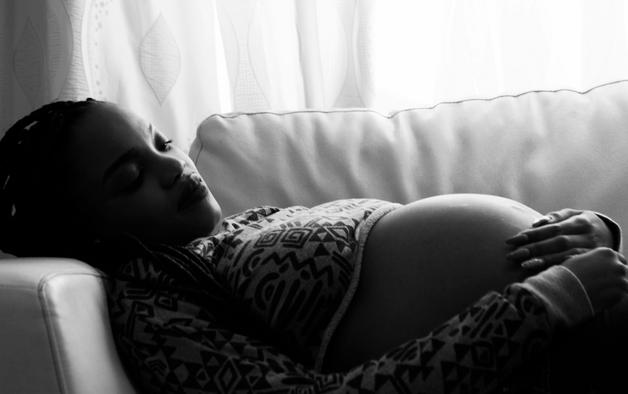When pregnancy brings fatigue, a sore throat that refuses to fade, or a nagging fever that keeps coming back—questions start swirling. Could this be something more than the expected weariness? Mononucleosis during pregnancy stands out as one of those worries that linger in the background for many parents-to-be. The concern isn’t surprising. “Mono” is known for its tenacious fatigue, and its origin—Epstein-Barr virus—sounds intimidating when uttered in the same sentence as pregnancy. Parents find themselves asking: Could this affect my baby? How serious is it, really? And if that long-lasting tiredness isn’t simply the mark of the third trimester but signs of an underlying infection, what steps will actually help? Understanding the nuances of mononucleosis during pregnancy—its risks, ways to recognize it, and best approaches to care—can offer reassurance at a vulnerable time. Here, you’ll find an exploration of symptoms, scientific explanations, practical tips, and balanced advice, shedding light on what to expect (and what matters most) if mono becomes part of your pregnancy journey.
What is mononucleosis during pregnancy?
Mononucleosis during pregnancy refers to the symptomatic infection with Epstein-Barr virus (EBV), which belongs to the herpesvirus group and often hides quietly in the body after a first encounter. EBV is widespread—by adulthood, most people have met this virus before, sometimes without even knowing. But if the body’s first battle with EBV (or a rare reactivation) occurs while expecting a child, parents may be left facing a slew of unwelcome effects.
Its nickname—the kissing disease—comes from its favored mode of travel: saliva. But it’s not always kisses. Sharing drinks, eating utensils, or closely interacting with someone carrying the virus can be enough for it to spread. While initial infections during pregnancy are rare (just 0.05–1.5% of pregnancies), shifts in immune defense mechanisms while carrying a baby may slightly enhance vulnerability to reactivation. How long does mononucleosis during pregnancy last? Most parents recover within weeks, but exhaustion—what doctors call “profound, persistent fatigue”—can sometimes persist longer.
Why do parents worry about mononucleosis during pregnancy?
It’s not just the textbook symptoms parents fear, it’s also the unknowns. Fortunately, most scientific studies agree: vertical transmission (the virus passing from mother to fetus) is almost unheard of with EBV. The placenta functions as a reliable shield. So, how does mononucleosis during pregnancy threaten the growing baby? The danger comes not from the virus itself, but from prolonged maternal fever and complications that, although rare, can affect both parent and child. Fatigue is often amplified by the already energy-demanding state of pregnancy, and stress accumulates—will it ever go away? Is there risk of miscarriage, early labor, or something more sinister?
Equally important, several other conditions can mimic mononucleosis during pregnancy: viral infections (like cytomegalovirus), toxoplasmosis, or even serious issues like preeclampsia. This overlap creates a diagnostic puzzle, heightening the need for attentive medical care and clear communication with your team.
Recognizing the symptoms: red flags and typical features
Picture this: fatigue follows you from morning to night, no matter how early you go to bed. A fever creeps up, sometimes over 38°C (100.4°F), and your muscles throb. The sore throat is relentless, your tonsils swollen and angry-looking (sometimes with a white coating that could hint at tonsillitis), and your neck feels tender from swollen lymph nodes. Does this sound familiar? Here are the leading symptoms of mononucleosis during pregnancy:
- Profound, persistent fatigue unrelieved by rest
- Fever, sometimes with chills
- Sore throat (pharyngitis, often severe)
- Enlarged, tender lymph nodes, especially in the neck or under the jawline
- Headache, muscle pain, sense of “not quite right” (malaise)
- Appetite reduction or even nausea at the sight of food
Symptoms can be perplexing—sometimes they mirror plain pregnancy side effects or even mimic the flu. Are there warning signs to take especially seriously? Yes:
- Sharp, sudden pain under the upper left ribcage (possible splenic involvement—the spleen swells in up to half of cases)
- Difficulty breathing, severe weakness, or confusion
- Persistent high fever that won’t respond to acetaminophen
- New neurological issues (rare, but urgent: like fainting or seizure)
Any of these demand quick medical attention.
Diagnosing mononucleosis during pregnancy: from suspicion to certainty
Suspecting mononucleosis during pregnancy is one thing, confirming it is another. Your healthcare provider starts by piecing together your symptoms, then moves to targeted blood tests. A typical assessment includes:
- White blood cell count (special focus on lymphocyte levels—a specific type often increased during acute EBV infection)
- Analysis of EBV antibodies (VCA IgM/IgG): Detection of IgM points to recent infection, whereas IgG shows previous exposure.
- Liver enzyme checks and, in select cases, abdominal ultrasound to rule out or confirm splenomegaly (spleen enlargement)
Other conditions—CMV, HIV, severe viral hepatitis, toxoplasmosis, or preeclampsia—can masquerade as mono, so precise diagnosis is vital, avoiding unnecessary interventions like premature delivery.
Who is at risk? The science behind susceptibility
While most adults carry dormant EBV, only a handful develop full-blown mononucleosis during pregnancy. What tips the balance? Immune system recalibration in pregnancy opens a window for reactivation, and psychosocial stress—chronic anxiety, depression, even day-to-day overwhelm—can also disrupt immune function. High stress means higher circulating cortisol, known to reduce immune vigilance and enhance vulnerability to viral reactivation. Maintaining emotional balance, asking for support, and prioritizing rest are not just “nice-to-have”; they truly affect outcomes.
Complications for the mother: rare, but worth knowing
Most cases of mononucleosis during pregnancy are mild. Yet a handful spiral into serious territory. The most prominent threat is splenomegaly; if the swollen spleen ruptures (after a fall or vigorous activity), it constitutes a medical emergency. Other complications, while rare, include:
- Secondary hemophagocytic lymphohistiocytosis (sHLH): An immune system overdrive, resulting in destructive inflammation.
- Liver involvement: Temporary hepatitis with enzyme elevation.
- Acute kidney injury: More rare but observed in severe cases.
Some laboratory changes can resemble those seen in preeclampsia, potentially confusing the picture and leading to premature decisions. The key? Close monitoring and a collaborative approach involving obstetricians, infectious disease specialists, and sometimes hematologists if complications loom.
Risks and outcomes for the fetus
Parents facing mononucleosis during pregnancy often fret over possible effects on their child. The science is reassuring: vertical transmission—direct infection of the fetus—is exceedingly rare. Birth defects linked to EBV are not supported by evidence. Yet there remains cautious concern about sustained high fever, which in the first trimester in particular may heighten the odds of miscarriage or preterm birth—although the vast majority of pregnancies progress without incident.
A few research papers speculate about possible links between EBV reactivation and fetal growth restriction, but data are sparse and inconclusive. Babies born to parents who had mono during pregnancy almost never display signs of infection themselves. Prenatal care and close observation guarantee the best odds for a healthy outcome.
Treatment and management: what works, what to avoid
There’s no magic bullet for mononucleosis during pregnancy. Antibiotics don’t touch viruses—unless there’s a confirmed bacterial complication. Some, like ampicillin, may cause skin rashes in those with EBV. Antivirals aren’t generally effective, either. So what helps?
- Rest: Don’t fight the fatigue. Ample rest is part of therapy.
- Hydration: Fluids support recovery and help manage fever.
- Acetaminophen: Essential for managing temperature and discomfort. Always use standard dosages; discuss any persistent fever with your provider.
- Avoid NSAIDs and aspirin unless specifically instructed by your physician.
- Breastfeeding? Pause temporarily during active infection; once recovered, resume after professional advice.
Regular check-ins with your healthcare provider are not mere formality—they monitor your temperature, spleen size, overall health, and help decide if further investigations are warranted.
Prevention tips for expectant parents
If you’re keen to avoid mononucleosis during pregnancy, practice strict hygiene:
- Handwashing with soap and water—before meals, after outings.
- Steer clear of sharing drinks, cutlery, and personal objects like toothbrushes.
- Avoid kissing or close contact with anyone unwell.
- Disinfect frequently touched surfaces (door handles, phones, remote controls).
- Let others know if someone in the home is symptomatic—early awareness can mean early action.
A balanced, vitamin-rich diet and plenty of sleep underpin immune strength. Staying physically and emotionally healthy isn’t only about you—it’s a buffer for your growing baby.
The importance of prenatal care: a safety net
Never ignore symptoms like unexplained exhaustion, ongoing fever, strange abdominal pain, or trouble breathing. Consistent prenatal checkups allow healthcare professionals to track changes, provide reassurance, and take action long before complications can arise. Bringing up every odd symptom or worry isn’t just “allowed”—it’s encouraged.
Open, honest dialogue with your doctor or midwife ensures tailored care and reduces anxiety. Timely support is always within reach.
Emotional well-being and immunity: the hidden factors
Immune system shifts—not only physiological but also psychosocial—add another layer to mononucleosis during pregnancy. Chronic stress, relationship changes, and even emotional overwhelm can modulate immune system responses, raising the risk of EBV reactivation or making recovery longer. Support networks, mental health resources, and compassionate conversations make a genuine difference to recovery trajectory and parental confidence.
Clinical insights: learning from real cases
Medical case reports highlight the slippery nature of mononucleosis during pregnancy—sometimes masquerading as preeclampsia, sometimes prompting discussions about early delivery until EBV is identified as the real culprit. Multidisciplinary approaches, involving infectious disease, obstetric, and mental health teams, assure the best care—outcomes for both mother and baby are optimized with joined-up thinking.
When should parents seek medical help?
Never wait if these signs appear:
- Difficulty swallowing or taking full breaths
- Persistent dizziness, fainting, or feeling unusually weak
- Severe aches that don’t respond to rest or medication
- High, unresolving fever
- Intense headaches or mental confusion
- Sudden, sharp pain beneath the left ribcage
Prompt professional evaluation ensures that potential complications are addressed early and effectively.
Key Takeaways
- Mononucleosis during pregnancy remains uncommon and generally resolves with attentive, practical care.
- Epstein-Barr virus transmission to the baby is extremely rare; most babies are unaffected.
- The backbone of care is rest, hydration, temperature control, and steady follow-up with your providers.
- Practicing strict hygiene and minimizing close contact when someone is sick is the first line of prevention.
- Staying alert to severe or persistent symptoms is key to preventing complications.
- Prioritise regular prenatal care—early conversations and shared decision-making offer peace of mind and optimal outcomes.
Support and trustworthy resources are always at hand for parents. For tailored advice, free health questionnaires for children, and access to a team of pediatric and maternity experts, download the Heloa app. Whatever your questions, you have a partner on this journey toward a healthy pregnancy.
Questions Parents Ask
Can mononucleosis during pregnancy be confused with other illnesses?
Absolutely. The symptoms of mononucleosis—such as fatigue, sore throat, and fever—may resemble other common conditions seen in pregnancy, like the flu, strep throat, or even certain viral infections such as cytomegalovirus. Sometimes, early symptoms can mimic those of pregnancy itself, adding to the confusion. If symptoms seem unusual or persist, it’s always wise to discuss them with your healthcare provider. This allows for careful evaluation and, if necessary, additional tests to clarify the cause and ensure the best support for both you and your baby.
What should I do if I think I’ve caught mono during my pregnancy?
First, try not to worry—many parents face this uncertainty, and you’re not alone. If you suspect you might have mononucleosis, reach out to your doctor or midwife promptly. They can recommend specific tests to confirm the diagnosis and help monitor your symptoms. In the meantime, focus on rest, stay hydrated, and avoid sharing cups, utensils, or food with others to limit spreading the virus. It’s also helpful to write down any symptoms and changes in how you feel to share with your healthcare team.
Is there anything I can do to speed up recovery from mono while pregnant?
Recovering from mononucleosis often requires patience, as fatigue and discomfort can linger. It’s completely understandable to want to feel better as quickly as possible. Although there isn’t a cure, prioritizing rest and good hydration is beneficial. Nutritious meals can support your immune system. Gentle activity, such as short walks, may help maintain your spirits and prevent muscle weakness, but listen to your body—there’s no need to push yourself. Allow yourself the time and space to heal, and don’t hesitate to accept help from loved ones when needed. Your well-being matters, and small steps can make a difference during recovery.










